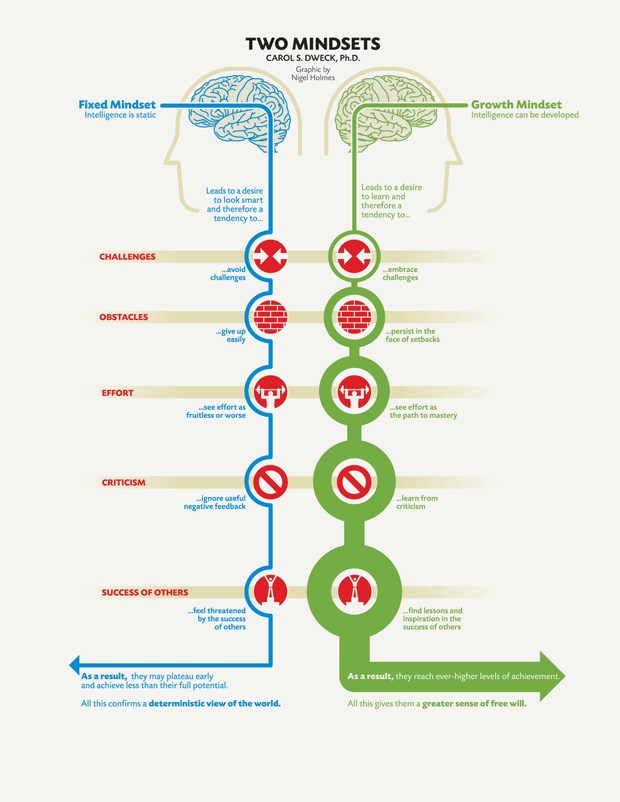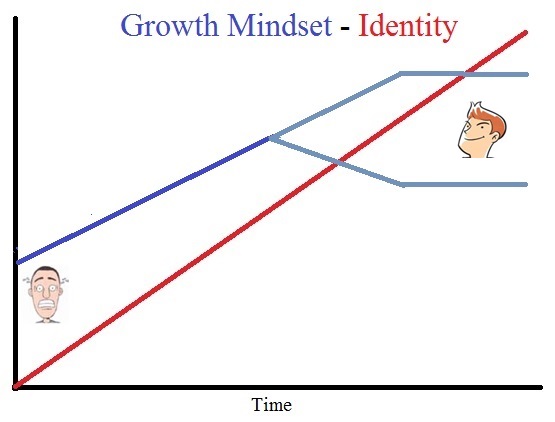
| Volume 34 #1 | July/August 2017 | |
Why is it that over 95 percent of the public do no dancing of any kind? If we could learn the reasons and adapt marketing in order to address the mental blocks, then we could improve effective recruiting and retaining new Scottish dancers.
 |
We observe that each folk dance form is practiced by a small fraction of one percent of the population. Yet each dance form has passionate social groups of dancers who enjoy the physical and mental health benefits that much of the public would like but most lack the curiosity to explore. I have been learning about Fixed versus Growth Mindsets, and also the Identity model, in order to improve my understanding of motivation for learning dancing and joining a social group.
People often make statements like, "I'm no good at dancing," or, "I tried dancing and I am a klutz." I have had the opportunity to meet around 300 people who tried square dance lessons over the past three years. Seventy percent learn about the lessons from friends and family. I am fascinated to observe fresh brains gradually learn the dance skills. New dancers are frequently nervous about trying square dance, evidenced by clammy palms or clinging grip while dancing. I scan the hall during lesson breaks for anyone who is not engaged in conversation, and I walk over to talk with them. I gesture around the hall and say that they are going to meet all these friendly people, and we will learn some square dancing as a bonus. This relaxes new dancers and helps them enjoy the lessons.
According to Stanford Professor of Psychology Carol Dweck, "Having a fixed mindset led you to be afraid of challenges that might unmask your deficiencies, made you withdraw in the face of difficulty because you felt stupid. You didn't want to feel stupid. You didn't want other people to think you're stupid. Whereas having this growth mindset, the idea that your abilities could be developed, made you think, why waste my time looking smart when I could be getting smarter? And I do that through taking on challenges. I do that through seeing them through."
Professor Dweck continues, "When you call someone smart, you put them on a pedestal. And their life becomes organized around deserving the pedestal. And you can only do that by narrowing your life to include only things you're sure you can succeed at. When we tell someone, you did that so quickly, I'm so impressed, they hear, if I didn't do it quickly, you wouldn't be impressed. A lot of things take a long time. Or you got an A without working, then they think, oh, if I work, you're not going to think I'm smart at math, say. And so you're just very subtly conveying these ideas that smart people don't make mistakes, smart people don't have to work hard, the most important thing in the world is to be smart and look smart at all times. And then people start narrowing their world so they can succeed within that fixed mindset."
The Fixed Mindset where people are psychologically blocked from exploring something new reminds me of my experience with fellow Hewlett Packard engineers. Liza taught a weekly lunchtime SCD class at HP, with John Shaw and myself as support members. A surprising result was that the great majority of these supposedly creative engineers lacked the curiosity to walk 100 feet to a conference room to try something new. We can read the 2006 newsletter item titled Scottish Country Dance Comes to Hewlett Packard.
Another psychology factor is the Identity model, compared with the Consequences model, for how people make decisions, described by the Heath Brothers in their book titled Switch. The rational side of the brain uses the Consequences model and weighs the costs and benefits of our options, and makes the choice that maximizes our satisfaction. The stronger emotional side of the brain uses the Identity model to evaluate a situation and ask, "What would someone like me do in this situation?" As we develop and grow in an identity, it becomes an increasingly important part of our self-image and influences our decision making, to join a social group for example.
 |
We can use these concepts in order to recruit and retain dancers. Given that most people have a strong fixed mindset when they consider trying Scottish dance, we need to communicate emotionally compelling marketing messages that avoid triggering feeling or looking stupid, and instead focus on other beneficial feelings. Many people are lonely and are interested in making new friends. Some people are interested in moving to the music. Some are interested in the challenge to learn new dance skills. Some would like a lifelong activity to lose weight or remain healthy. Women are more open to trying dance compared with men; women will often bring their men with them or else they come solo and report back how much fun they had.
As new dancers continue to learn the dance skills, the teacher can communicate the Growth Mindset expectation that making a lot of mistakes is part of dancing and it's nothing to get excited about, and teach recovery from mistakes as a useful skill. We can read the related newsletter item titled Gold Star! Recovery Is Important, Not the Mistake.
For retaining dancers, as they continue to make friends and learn the dancing skills, they develop an identity with the dance group. The friendships build group loyalty with the dancing skill as the common interest, and some members will be keen to develop their dancing with the Growth Mindset.
References:
Carol Dweck: "The Growth Mindset" | Talks at Google
Heath Brothers: "Switch - Chapter 7 -- Grow Your People" | Identity and Mindsets